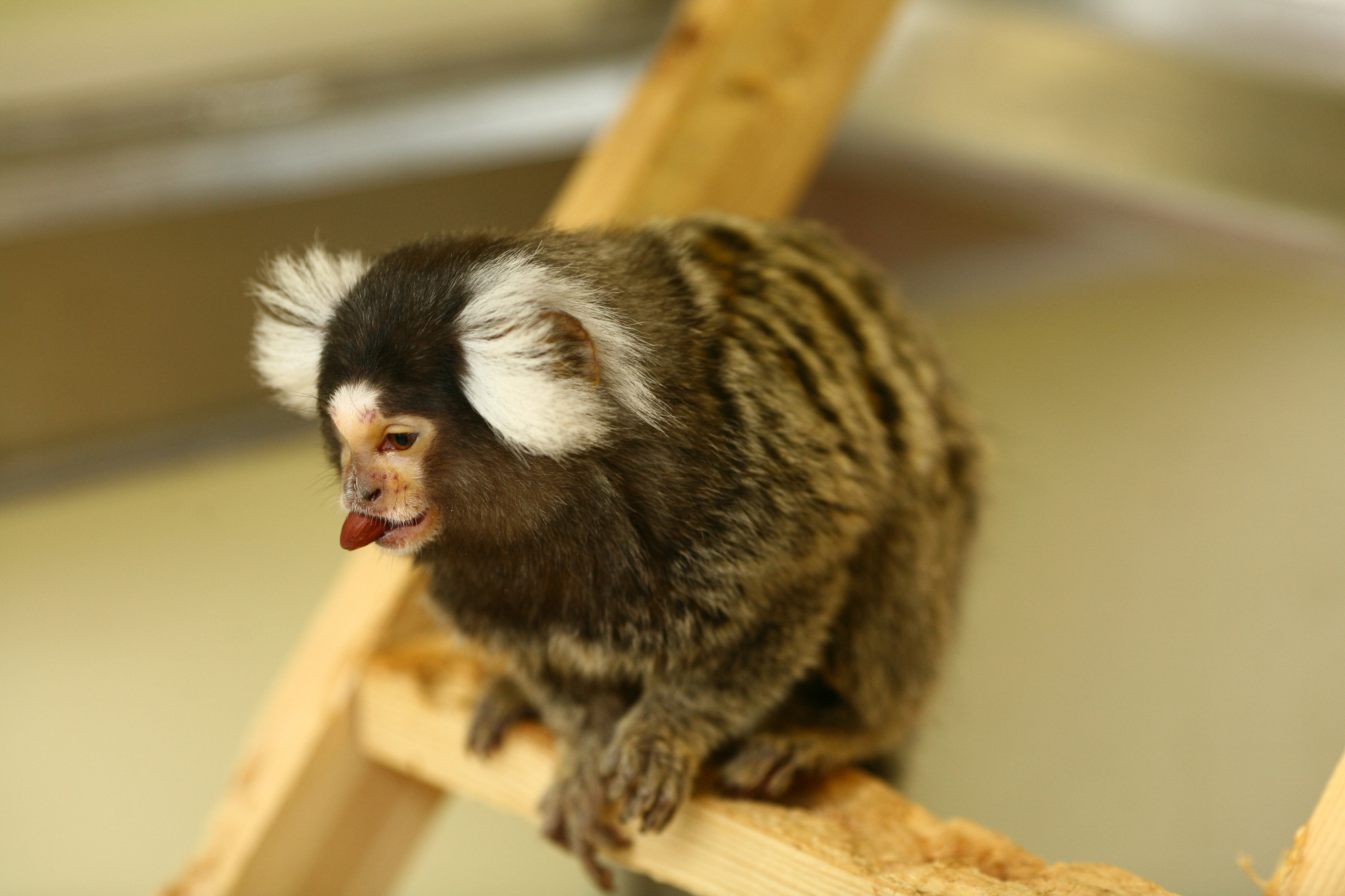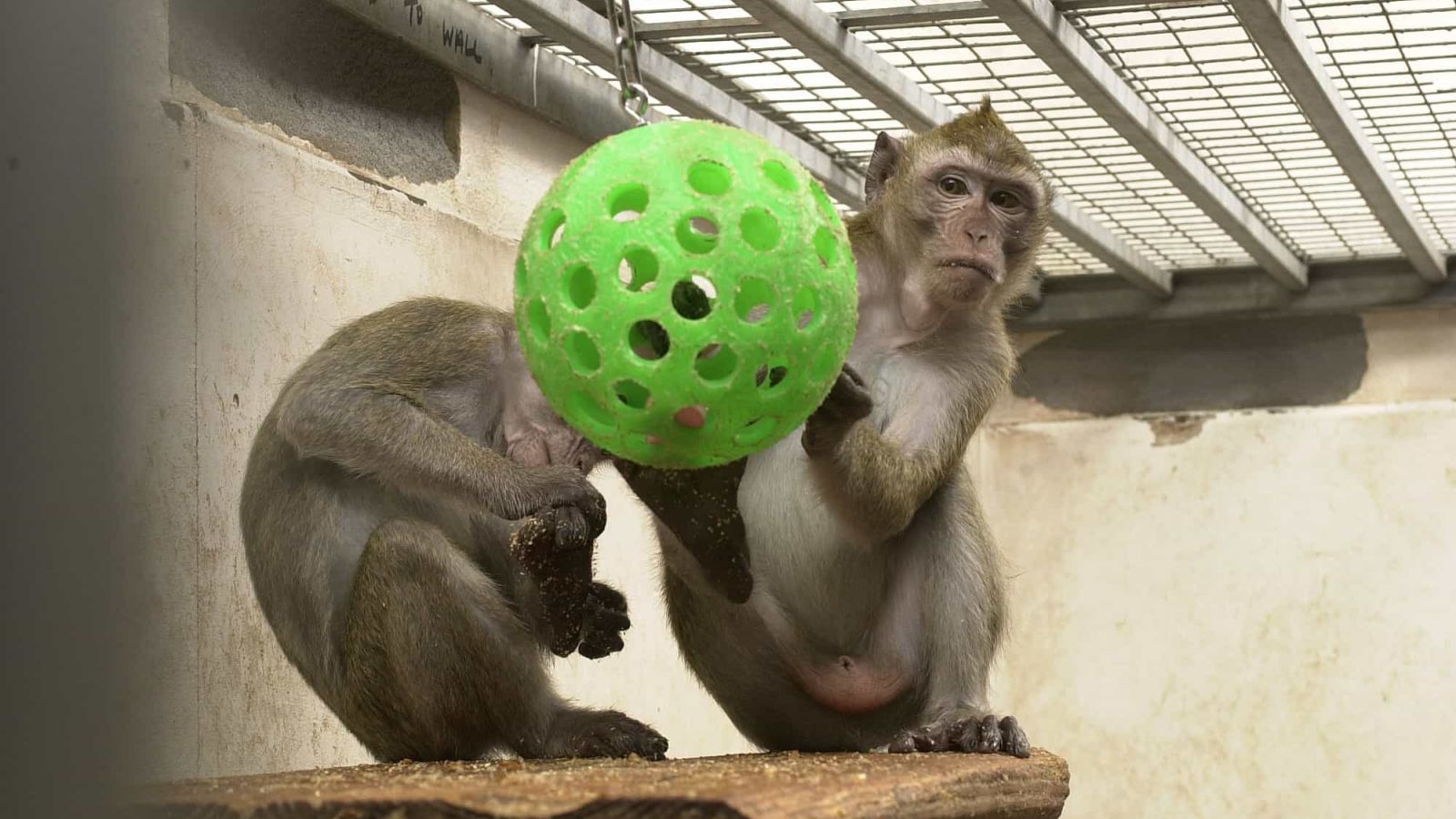The most-often used monkeys in medical research are: Rhesus macaques (Macaca mulatta), Cynomolgus macaques (Macaca fascicularis) and Marmosets (Callithrix jacchus).
Monkeys currently make up only 0.1% of the animals used in research in Great Britain.
Why are monkeys used in research?
Human biology and disease can be studied in Monkeys because they are very similar to humans; biologically, anatomically, and physiologically. They have similar brains, muscle structure and reproductive and immune systems. This means research with monkeys give us results which are more relevant to humans compared perhaps with the information obtained from mice or rats.
However, because monkeys are complex animals with complex needs, they are only used when it is absolutely necessary.
View this post on Instagram
What types of research are monkeys used in?
Monkeys are used in a range of research which includes neurological disorders such as Parkinson’s disease, reproduction research, vision research and vaccines.
Monkeys see in colour and have binocular vision, like us. This makes them particularly useful for research into vision.
Rhesus macaque monkeys have been vital in the race for an effective vaccine against the SARS-COV-2 virus that causes COVID-19. They were used to show whether potential vaccines were effective and safe. Only after animals testing were vaccines trialled in humans.
Marmoset monkeys are are predominantly used to research into Parkinson’s disease. After the accidental discovery of MPTP, a substance that destroys a part of the brain and causes the symptoms of Parkinson, the substance is used to induce the symptoms of Parkinson’s in marmoset monkeys. This has helped scientists come up with new treatments for Parkinson’s disease. We filmed marmosets used in this research.
More examples of how monkeys are used in research are listed in our iBook: Primates in Medical Research.

How are the monkeys looked after?
Due to their high levels of intelligence and sociability, monkeys are usually kept in pairs or groups, given ample vertical space to climb and swing and are encouraged to forage for food. This is to mimic their daily activity in the wild. As standard practice, vet is on call 24 hours a day and care is taken to ensure they do not suffer pain and discomfort.
You can watch macaques in the Oxford Primate facility in our online lab tour. You can look around and see videos of technicians and scientists talking about their work.
You can also see monkeys at the Centre for Macaques in this film. This is where most research monkeys used in the UK are bred and trained.
10 Facts about Monkeys
Find out more about monkeys in research with our 10 facts infographics and from these references:
https://www.britannica.com/animal/monkey
https://www.ncbi.nlm.nih.gov/pmc/articles/PMC5636196/
https://copublications.greenfacts.org/en/non-human-primates/l-2/2-research-safety-testing.htm
https://mrc.ukri.org/publications/browse/primates-in-medical-research/
Going further
Primate research remains controversial and has been the subject of vigorous campaigning by antivivisection groups in the past. Many independent and expert enquiries such as the Weatherall Report have concluded that there is a strong case for their use to advance scientific and medical knowledge, and in assessing the safety of new medicines. The use of primates, like other animals, should only be when there is no alternative, and should be subject to careful regulation.
Most research primates are macaques or marmosets. They are used in relatively small numbers (they make up around 0.1% of research animals) but they have been important in many important medical advances; for example the polio vaccine, life support systems for premature babies, and deep brain stimulation for Parkinson’s Disease.
Currently the main areas of primate study are infectious diseases to develop vaccines and treatments for HIV/AIDS and malaria. Monkeys are also used in neuroscience to better understand the brain and treat conditions ranging from Alzheimer’s disease to schizophrenia. The other main research area is into reproduction, fertility and development in the womb. They are also used in safety testing new medicines and vaccines.
One particular example is the Cotton-top tamarin monkeys which have a high rate of spontaneous colon cancer. They develop colon cancer in a very similar way to humans, so investigations of whether colon cancer is heritable - as it can be in humans - are now a focus of research.
What the experts thought
The topic of using monkeys was the subject of the Weatherall Report in 2007. At the time the Government’s Chief Scientific Advisor, Sir David King FRS, said:
"Although rare, the use of primates in medical research and testing is invaluable, as an essential aspect of work which provides the best hope for breakthroughs in important areas such as neurodegenerative disorders and for aspects of immune and reproductive functions."
MRC press release responding to the Weatherall Report, June 2007.
"There is a strong scientific case for the carefully regulated use of non-human primates where there are no other means to address clearly defined questions of particular biological or medical importance."
Weatherall Report: The use of non-human primates in research, December 2006
"Primates have been used in research aimed at understanding how complex brains work, as their neurological development and higher cognitive functions are very similar to humans… Animal [primate] disease models were also used for research on hepatitis C, and polio."
Nuffield Council on Bioethics, The ethics of research using animals, May 2005
"... for certain experiments there are no alternatives to the use of non-human primates. Such experiments may be needed, for example, during the development of drugs and vaccines for prevention and cure of disease such as AIDS, TSE1, malaria, and influenza".
European Commission Scientific Steering Committee (SSC), The Need for Non-Human Primates in Biomedical Research, April 2002
"Many significant advances in modern medicine have been based on research involving primates."
MRC and Wellcome Trust, Primates in Medical Research, June 2006
Watch our videos
Parkinson's disease patient demonstrates his brain implant
Marmosets in medical research
Macaques in medical research
Related Links
Weatherall Report The use of non-human primates in research
Response to Weatherall Report recommendations
MRC/Wellcome Trust: Primates in Medical Research booklet
EC SSC Report: The Need for Non-Human Primates in Research
Nuffield Council on Bioethics report: The ethics of research using animals
NC3Rs guidance: Non-human primates
APC report: The use of Primates under the Animals (Scientific Procedures) Act (1986) with particular reference to regulatory toxicology
Home Office report: Aspects of Non-human Primate Research at Cambridge University. A Review by the Chief Inspector
FELASA response on primates in research European Academics Science Advisory Council (EASAC) statement
Commission response to Written Declaration
European Scientific Committee on Health and Environmental Risks (SCHER) opinion on primate research (January 2009)




